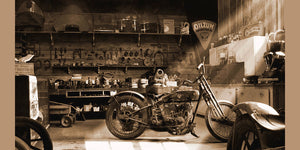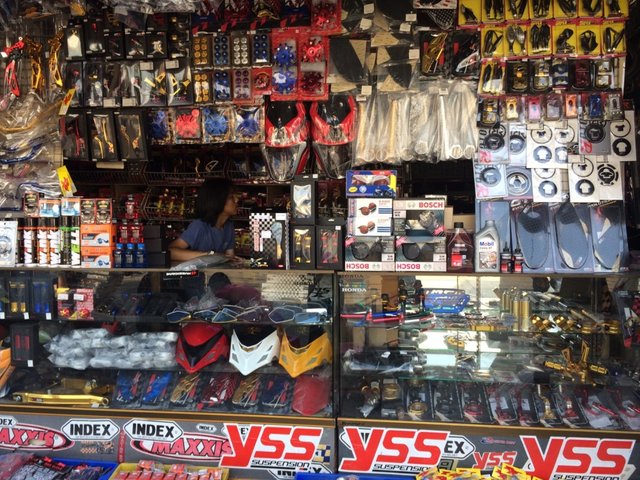Mastering Bike Gears: Exactly How to Enhance Your Riding Experience
In the realm of motorcycling, grasping the art of equipment adjustment is vital for enhancing your riding performance. Effectively utilizing and comprehending bike gears can dramatically impact acceleration, control, and gas efficiency, changing a typical trip into a seamless, electrifying trip. By integrating precise change timing and adjusting gear choice to different road problems, cyclists can make sure optimal engine efficiency and security. The nuances of clutch control, throttle coordination, and equipment mechanics beckon a deeper exploration, assuring to unlock the full potential of your machine. Just how can these techniques be taken advantage of to genuinely maximize your riding experience?
Comprehending Gear Mechanics
Just how do the details of equipment technicians affect motorbike performance? At the core of bike dynamics, gear technicians play a pivotal duty in converting engine power into activity, eventually determining speed and control. Gears, carefully crafted elements, permit motorcyclists to enhance torque and speed, ensuring a smooth shift through various surfaces and speeds. The equipment ratios, carefully made, establish the relationship between engine revolutions and wheel turns, influencing acceleration and gas effectiveness.
Recognizing gear auto mechanics begins with recognizing the significance of the gearbox, which houses several equipments of varying sizes. These equipments engage through a process understood as meshing, where teeth of different gears engage to transmit power.
Moreover, the idea of gear moving is important to optimizing performance. Timely and smooth shifts ensure that the engine operates within its ideal power band, avoiding unnecessary pressure and enhancing durability (motorbike shop). By understanding these mechanical intricacies, motorcyclists can accomplish a harmonious mix of control, effectiveness, and power, boosting their riding experience
Timing Your Changes
Change timing proficiency is crucial for enhancing bike efficiency and improving the riding experience. Effectively timed shifts guarantee that the engine runs within its optimum power band, which is crucial for keeping control, attaining smooth velocity, and making certain the long life of the motorbike. Riders need to develop an user-friendly feeling of when to move equipments, which entails recognizing the connection between engine changes per min (RPM) and rate.
To master change timing, pay attention to the engine's sound and really feel, as these offer vital ideas concerning when to transform equipments. The suitable change factor typically happens when the engine comes close to the upper variety of its power band without getting to the redline. Changing prematurely can result in an absence of power, while changing far too late may create unneeded engine strain
Furthermore, roadway conditions and riding style impact change timing. As an example, in city setups, smoother and much more constant changes might be required to browse web traffic efficiently. On the other hand, throughout freeway riding, fewer shifts at higher speeds can be more ideal. Exercising in different settings will enhance your capacity to time changes exactly, inevitably raising your riding experience to an expert level.
Enhancing Gas Efficiency
While understanding motorcycle equipments is essential for efficiency, boosting gas effectiveness is just as important for both environmental and financial reasons. Optimum fuel intake not just reduces functional costs yet also minimizes the environmental footprint of riding. To accomplish this, one need to understand the intricate relationship between equipment choice and engine efficiency.
Riding in a higher gear at lower rates can lead to engine carrying, which is damaging to both fuel economy and engine health. Alternatively, riding in reduced gears at high rates results in unneeded fuel usage.
In addition, routine upkeep plays a critical role in fuel efficiency. Making certain that the motorbike is well-tuned, with tidy air filters and effectively blew up tires, can enhance the rules of aerodynamics and decrease fuel wastage. Embracing a riding design that welcomes progressive velocity and smooth deceleration can contribute to far better fuel economic climate.

Strategies for Smooth Transitions
Attaining smooth gear changes is fundamental to enhancing the riding experience and guaranteeing the longevity of a bike's transmission system. Correct equipment moving not just adds to a smooth experience but additionally minimizes deterioration on the mechanical components. To master the art of smooth changes, motorcyclists need to focus on a few crucial techniques.

Second of all, clutch control plays a critical duty. Involving and disengaging the clutch efficiently requires practice. The clutch bar must be launched progressively, enabling a smooth transfer of power from the engine to the wheels without creating a jolt or sudden movement.

Adjusting to Roadway Conditions
Navigating varied roadway problems is an important ability for any type of motorcyclist aiming to keep control and security. Whether you're riding on damp surfaces, crushed rock roads, or navigating sharp turns, your ability to adjust your gear usage and riding technique is extremely important. Recognizing how to readjust your gears properly can dramatically impact grip and stability, making sure a more secure journey.
On wet roadways, it is advisable to keep higher equipments to lower torque and minimize wheel spin. This technique aids preserve grasp on slippery surface areas, permitting smoother velocity and slowdown. On the other hand, when riding on crushed rock or uneven terrain, lower gears are more effective. Lower equipments offer better control and permit you to react more quickly to unexpected changes in the road surface area.
Sharp contours require exact gear monitoring to balance rate and control. go to this web-site Downshifting prior to getting in a contour can aid keep momentum while ensuring the bike remains steady throughout the turn. Consistent practice in diverse problems boosts your ability to forecast and respond to changes in road appearance and slope.
Conclusion
Understanding bike gears considerably boosts the riding experience by improving fuel, velocity, and control performance. A thorough understanding of gear technicians and precise change timing guarantees the engine runs within its ideal power band, while smooth changes through reliable clutch and throttle coordination rise convenience and performance. Adapting equipment selection to numerous roadway problems, such as using greater gears on damp surface areas and reduced equipments on crushed rock, additional enhances handling and safety. Eventually, these skills elevate the total trip.
Understanding equipment mechanics starts with recognizing the importance of the transmission, which houses several gears of varying sizes. These gears communicate via a process recognized as meshing, where teeth of different gears engage to transfer power (moto parts nz). Mild modifications to the throttle throughout gear changes can protect against jerky movements and keep a consistent riding pace
Whether you're riding on wet surface areas, crushed rock roadways, or browsing sharp turns, your ability to adapt your equipment use and riding method is vital. Adjusting gear selection to different road problems, such as making Check This Out use of greater gears on wet surface areas and lower gears on crushed rock, further boosts handling and safety.